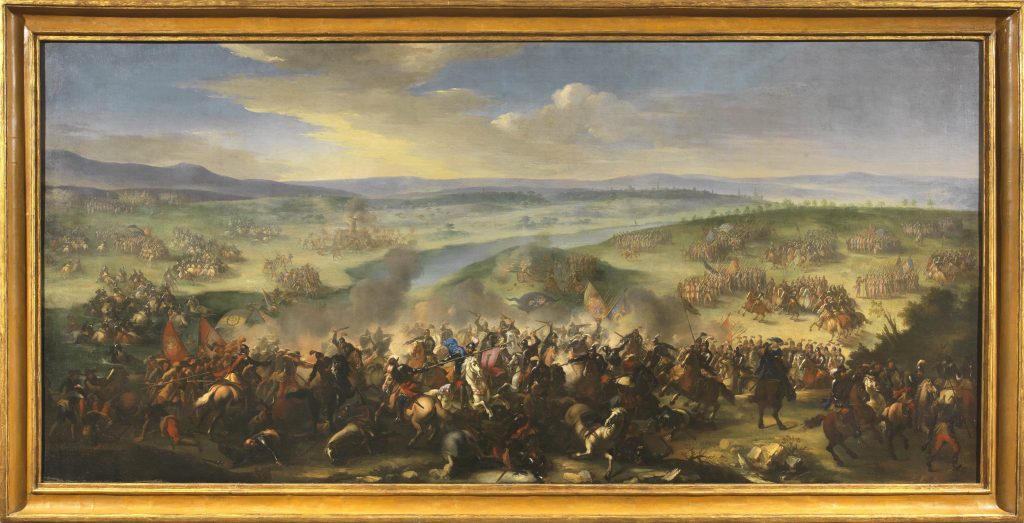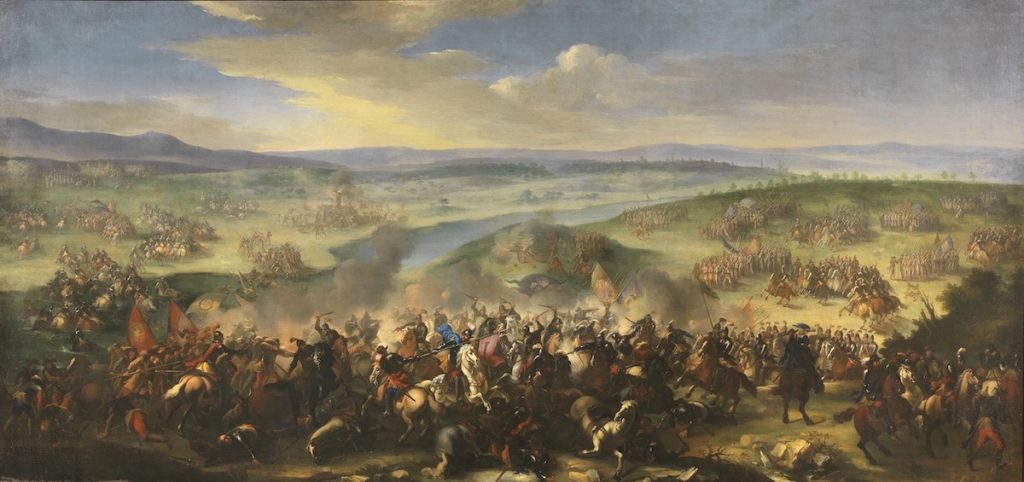PANDOLFO RESCHI
Danzica, 1640 – Florence, 1696
Battle of Gavinana
oil on canvas, cm 159×350
Monogram of the artist P[andolfo] F[ecit]
The battle represented by this monumental painting is, as reconstructed by Giancarlo Sestieri who has written an exhaustive study on the work, is the dramatic clash of Gavinana which in 1530 determined the outcome of the siege of Florence in favour the armies of Charles V and the reinstatement of the Medici family to the city government. The fortified village which lends its name to the battle, located in the vicinity of Pistoia, saw the encounter between the cavalry of the Florentine republic led by Francesco Ferrucci, who made a desperate attempt to break the siege in which the city of the lily had fallen, and the numerically superior imperial army headed by Philibert of Châlon, Prince of Orange. Among the commanders who fought under the Frenchman were Fabrizio Maramaldo, who was to become famous for the cowardly killing in cold blood – “Maramaldo, you are killing a dead man” – of the wounded Ferrucci, which took place precisely at Gavinana, and Alessandro Vitelli. The latter is recognizable from the harnessing of the charger with the colours of the family from Città di Castello – the Vitelli arms is also visible on a nearby banner – of the commander in the centre of the painting, ably revealed by an opening between the clouds of dust raised in the furious battle, who snatches a standard with the Colonna coat of arms from an enemy.
Sestieri has recognized with certainty the author of this painting, which was “very probably commissioned by an heir of the Florentine Vitelli family”, as the follower of Borgognone who worked for the Medici and other great families of the capital of the Grand Duchy, the Italianized Pole Pandolfo Reschi. The attribution, which is evident, is confirmed by the monogram on the back of the horse, which according to the scholar is to be deciphered as “Pandolfo Fecit”.
Among the works the scholar mentions for purposes of comparison, two great battle paintings – one of them monogrammed “P” – certainly deserve mention; they were painted by Reschi for Bartolomeo Corsini early in the seventh decade of the century, and are also quite large (about 200×290 cm) even if they are not as monumental as the work presented here, which in terms of dimensions represents “the absolutely largest of his entire body of works”.


